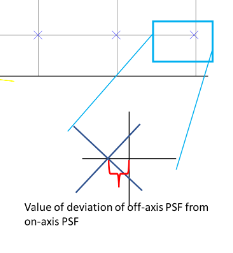Hi,
I need to create two maps (grids) presenting deviation of:
- best, on-axis focus vs its position on the filed ( on-axis focus vs the amount of off-axis defocus)
- on-axis PSF vs off-axis PSF

The closest things I found in Zemax is Grid Distortion. How to get started with this mapping? Where from to extract this information. I don’t mind long and laborious work :) I will be grateful for any tips.
With regards,
Marzanna Szwaj
Best answer by MichaelH
View original









